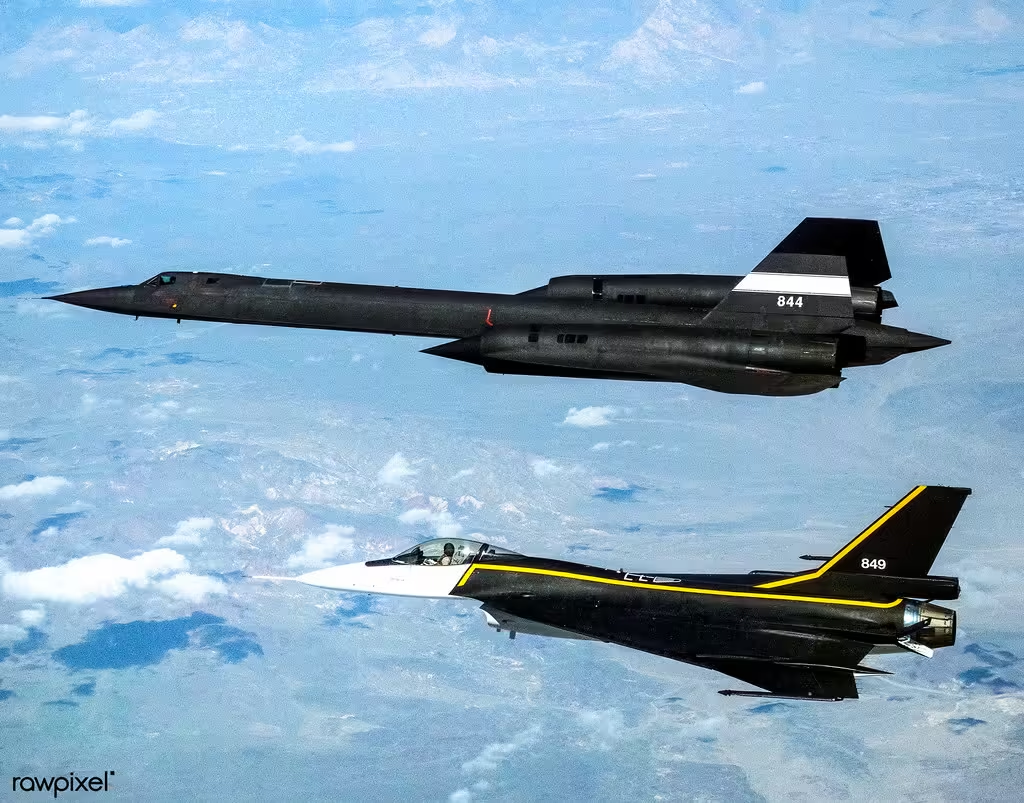
Table of Contents
Summary and Key Points: The General Dynamics F-16XL was an experimental variant of the F-16 Fighting Falcon, developed in the 1980s for the Air Force’s Enhanced Tactical Fighter (ETF) competition to replace the F-111 Aardvark.

-The F-16XL had a unique delta wing configuration, referred to as the “cranked arrow”, which improved lift-to-drag performance at supersonic speeds.
- The F-16XL lost the race to the F-15E Strike Eagle despite having advanced features such as a 25% better lift-to-drag ratio and 50% longer range than the original F-16.
F-16XL: The Forgotten Delta-Winged Variant of the F-16
For nearly fifty years, the General Dynamics F-16 Fighting Falcon has been a mainstay of the United States Air Force. The F-16’s design is distinguished by its compact size, bubble canopy, single engine, and symmetrically angled horizontal stabilizers.
However, the design of the F-16 is not always set in stone. In the 1980s, a version with a delta wing-like structure was in flight. Known as the F-16XL, this was a significant change to the F-16 models most familiar to the general public.
An Experimental Design
The Air Force held an Enhanced Tactical Fighter (ETF) competition in 1981 to replace the F-111 Aardvark, and the F-16XL was one of two entries. Naturally, the F-16XL did not win the bid. The F-15E Strike Eagle that won the ETF is still in use today.

Only two F-16XL prototypes were built. The prototype was put on hold until 1988 when it was transferred to NASA for further study after losing the ETF competition. The aircraft operated until 2009, before being retired and stored at Edwards Air Force Base.
The Supersonic Cruise and Maneuver Prototype (SCAMP) program at General Dynamics served as the prototype for the F-16XL. For SCAMP, several wing configurations were considered, including a forward-swept wing. The Saab 35 Viggen, a delta wing-like design referred to as the “cranked arrow”, eventually became popular due to its impressive lift-to-drag ratio at supersonic speeds.
In collaboration with NASA’s Langley Research Center, the General Dynamics team invested substantial resources in research and development over the years. The final F-16XL design was decided upon in the late 1980s, just in time for the Air Force to announce the ETF competition in March 1981.
Going into the F-15E competition had some advantages. Initially, it required minimal changes compared to its original versions. On the other hand, the F-16XL required significant differentiation from the base-variant F-16s. Furthermore, the F-16XL had only one engine, while the F-15E had two. As a result, the F-15E’s maximum takeoff weight increased, increasing its ability to carry additional fuel and weapons. Apart from this, it included a backup engine for safety.

The Design of the F-16XL
The fuselage of the F-16XL was fifty-six inches longer than the original F-16, a difference only noticeable to the keen eye. Two sections attached at the joints of the main fuselage sub-assembly account for the extra length.
To make room for the revised wing design, the F-16XL’s tail had to be tilted upward at an angle of 3.16 degrees, and its ventral wing had to be removed to prevent it from hitting the ground during takeoff and landing.
In supersonic flight, the improved design resulted in a 25% increase in lift-to-drag ratio compared to the original F-16 (the two aircraft performed similarly in subsonic flight). Test pilots said the F-16XL performed admirably at both low and high altitudes.

Interestingly, compared to the F-16, the F-16XL can carry 65% more fuel. Its range has been increased by fifty percent. The XL’s large wing allowed it to carry heavy weapons payloads in several configurations.
About the Author: Harrison Kass
The author of more than 1,000 articles on international politics, Harrison Kass specializes in writing on the military and national security. Harrison is a pilot, lawyer, guitarist, and former minor league hockey player. He joined the US Air Force as a trainee pilot but was later medically discharged. Harrison holds an MA from New York University, a JD from the University of Oregon, and a BA from Lake Forest College. Harrison lets Dokken listen.
READ | Russia’s supersonic bomber, the XB-70 Valkyrie, was rendered obsolete before its flight.
READ | B-29s dropped atomic bombs on a fleet of battleships and aircraft carriers.


3 thoughts on “F-16XL: A ‘lost’ F-16 Fighting Falcon powered by steroids”